There are several ways to make life more enjoyable for others. I try to do this through my music and giving information about nutrition and sport that help me to preserve my health and youth as much as possible, and also enhance my creativity.
In my last article we talked about vitamin C. The reflections and recommendations that I bring you in this article are the fruit of my knowledge and years of experience in choosing foods according to their glucemic index. Making this choice brings innumerable benefits to our health and we owe these to the continuous advances by the scientific community in research regarding nutrition. I will show you the synthesis of what I consider most relevant in language that is accessible to everyone.

Looking back and seeing how our ancestors fed themselves we see that their food came from harvesting, hunting and fishing. Later from agriculture and livestock . These were natural foods and hardly processed. From these they obtained the proteins, carbohydrates, fats, vitamins and minerals, antioxidants and trace elements necessary for life.
However, the arrival of technology and industry, which have brought us so many benefits and advances, has also modified to a certain degree how carbohydrates are absorbed in certain foods, a macronutrient very sensitive to our organism. Carbohydrates are also called simple carbohydrates or complex carbohydrates (three names for the same molecule we commonly call "sugar." From now on we will talk about "carbohydrates" or even simpler, "sugar") .
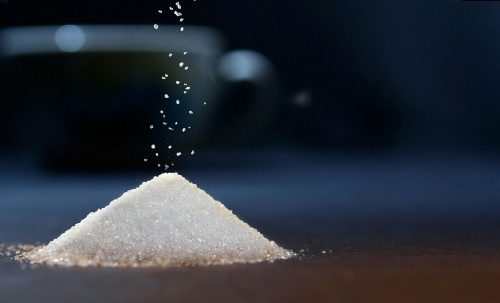
Throughout the years and due to successive changes to which certain foods have been subjected, this molecule, the carbohydrate following digestion, began to enter our blood faster and faster. We did not notice anything, but our body had to adapt to contain this great amount of energy that began to flood our bloodstream with more and more momentum. Today our bodies are still trying to adapt to this change, but with no success so far. Can we play our part to redress this situation? We will see that the answer is yes.
Back in the 1980s, the effects of "sugars" on people's health began to be studied. A new concept emerged, the "glycemic index" (GI). This is a measure that has served to classify foods according to how they raise blood glucose after being ingested. Therefore it is critical that we understand what the glycemic index of a food is. To do so, we need to to familiarize ourselves with the word "glycemia".
When we consume a food rich in carbohydrate, after its digestion and absorption, its nutrients pass into the bloodstream in the simplest way for them to be carried: glucose. The glucose molecules are, therefore, loose links after being separated from a long initial chain that was the original carbohydrate that the food contained. Well, glycemia is the concentration of this blood glucose at a given time. Thus, in simple terms we say that "we have a high blood glucose" if the concentration of glucose in our blood is high, and vice versa if it is low.
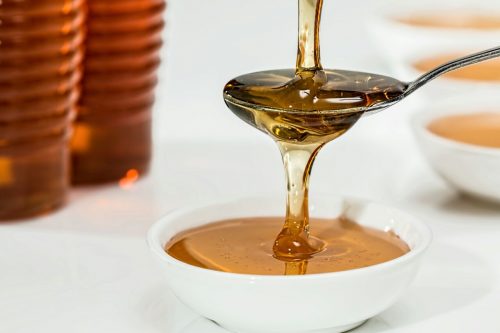
As the blood glucose concentration increases (as our blood sugar levels rise), our pancreas responds by sending "traffic agents" (molecules of a hormone called "insulin") to, among other things, remove excess glucose from the bloodstream by directing it to the cells that can store it or simply need it as fuel.
Therefore, our pancreas, knowing that an excessive and rapid concentration of glucose in the blood may be harmful to our health, reacts by sending us waves of the hormone insulin to remove that excess energy. But be careful!!! Because if this action is too overwhelming, we will be temporarily "out of gas" .

The more glucose circulates through our bloodstream, the more the pancreas works by secreting insulin
Through the glycemic index (GI) .Knowing the glycemic indexes of the food we will now discover. If you have reached this far it is worth understanding this concept as it will help you understand the rest of the article .
What researchers did in their day was very simple: they gave a group of people "glucose as food" to ingest and then observed to what extent it made blood glucose levels rise in their blood. They took this reference data as a mirror and arbitrarily assigned it the value of 100, ie, Glycemic Index 100 (GI 100). Then they prepared to do the same with the rest of the food in our shopping basket and compared the behavior of each of them with that of "glucose as food".
It was then that they discovered, for example, that there were foods whose carbohydrates were absorbed at half the speed of "glucose as food." Therefore, these foods produced a peak, a rise in blood glucose half that of the reference. This is the case of foods with Glycemic Index 50 (GI 50). This is the case, for example, of the sugar-free cookie.
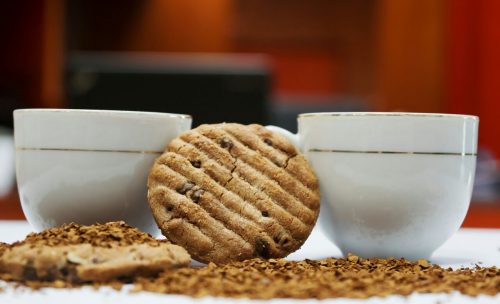
They also observed others that penetrated blood even more slowly than the mirror; as in the case, for example of fructose (fruit sugar) that has a GI of 20.
On the contrary, they also found that there were foods that behaved almost the same as "glucose as food"; as in the case of the oven potato with a GI of 95.
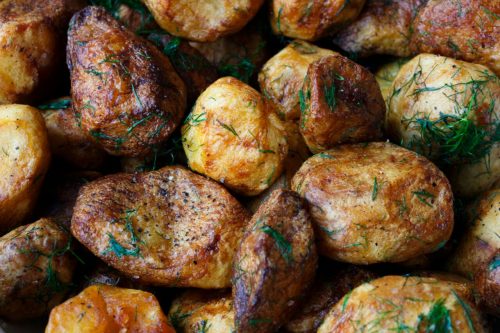
In conclusion, with these three examples we already have an idea of what GI means. If a food has a GI 100 (glycemic index of 100), we would say: its "sugars" enter the blood with the same speed, generating the same peak as that generated by "glucose as food". If a food has a GI 50 we would say: the "sugars" of this food enter the blood at half the speed of "glucose as food”.
Although we will see later on the reason for the following statement, we are already in a position to understand what it means: "Ingestion of foods with average or high glycemic indexes, that is, equal to or greater than 50 makes us store energy in the form of fat, will make us fat!
It is a way of eating where we identify foods that have a glycemic index equal to or less than 45 , and we choose only these in our daily shopping basket.

By releasing blood glucose gradually. In doing so, the pancreas normalizes its functioning, works properly and secretes moderate, low amounts of insulin in the blood, which is key !
They release blood glucose quickly. In doing so, the pancreas has no choice but to urgently secrete large amounts of insulin in order to take most out of the glucose of the bloodstream. And this way of behaving carries with it two harmful effects: on the one hand, the pancreas works at a faster pace, and on the other hand after its intervention (we do not know what is worse) leaves the energy levels at a minimum!!! It leaves us shivering !!!

Firstly, as we are allowing our pancreas, that organ that produces the hormone insulin, to not have to work at a breakneck pace all the time.
Secondly, we are going to achieve that the mechanisms of fat storage are paralyzed. Remember that insulin, in its determination to draw excess energy (glucose) from the blood, also sets in motion fat storage mechanisms (something no one wishes). Therefore, we will deactivate it.
Thirdly, if the food we eat only slightly increases the insulin in the blood, the nutrients will circulate through the blood stream irrigating our whole body normally , and the excess energy will simply be discarded by our body.
And finally, if we also feed ourselves without submitting to caloric restrictions and do not skip any meal (as we will see at the end of the post), our body warns us to supply everything it needs and begins to slowly get rid of the reserve fats we had accumulated !!!

It enhances our concentration. The food for the brain is glucose. When we feed ourselves this way our neurons have fuel uninterruptedly. However, the average and high glycemic indexes cause ups and downs in blood energy that negatively affect our concentration. .
We get more stamina and performance in our daily activities.A slow and sustained supply of energy to our muscles and brain is ideal for maximizing our endurance and performance in daily activities. However, the consumption of foods of medium and high glycemic index leads to frequent fainting due to the periodic drops in blood glucose.
We maintain a stable mood. Keeping our energy levels stable keeps our mood stable. However, the consumption of foods of medium and high glycemic index gives rise to the typical irritability that accompanies the ups and downs of blood glucose.
They keep us cool and alert. Stable energy levels keep us cool. However, medium and high GI foods cause sleepiness after meals.

We feel satisfied for much longer. We feel more complete. By keeping energy stable through our blood, the body works normally as it gets the energy it needs. So this keeps us from eating. However, after consuming foods with medium and high glycemic indexes, it is normal to find ourselves hungry sooner than anticipated; we feel the sudden need to eat every so often.
Reduces our excess weight.The body, which is very wise, realises that we are treating it very well, as it has all the energy it needs. Therefore, we do not force it to begin energy storage processes in the form of fat for fear of future shortage. If we are also full at each meal (without quantity restrictions) and we skip meals, then what does our body do? Very simple, it begins to use the excess energy that we have in our fatty deposits (our spare tyres) and gets rid of them progressively.

Prevents and normalizes type 2 diabetes.From the moment we stop subjecting the pancreas to forced labor, it normalizes its functioning until it works properly.
It lowers cholesterol and triglycerides.There is evidence that choosing foods with low GI, lowers LDL (bad cholesterol), increases HDL (good cholesterol) and lowers our blood triglycerides (fat)
Improves our cardiovascular system. Eliminating excess weight that leads to low GI food choices results in our heart working with less effort, being less exhausted.
Prevents macular degeneration.Evidence also shows that the consumption of low GI foods could prevent such degeneration.
There are countless lists of glycemic indexes on the internet. It is fast and easy to access them. Just enter: "glycemic index of food" and you will find different lists to consult .

Very easy. In general, after identifying which foods we usually consume with glycemic indexes equal to or greater than 50, substitute these for their lower-GI first cousin.
Here is an example of what I usually do:I substitute normal bread for whole- meal bread, normal chocolate for 70% chocolate, jam for fructose jam (fruit sugar), caramelized nuts for natural dried fruits, roasted or fried, honey for agave syrup, side dishes of potatoes for vegetables of any kind, dates for dried figs, table sugar for fructose, macaroni for spaghetti, Beer for wine or soft drinks.
All foods can be substituted for suitable glycemic index counterparts, if they do not have a first cousin; they surely have a second cousin. Just look for them and give us some time to get used to their consumption.

In order to finish up, let us consider some important extreme.
Cooking.The more food is cooked, the more its glycemic index is raised. So we must ensure it is cooked at a recommended time, no more. Do not overcook food.
Fibre.The more fibre a food contains, the more slowly its nutrients (including carbohydrates) are absorbed and thus the more its glycemic index is reduced. Hence, whole foods have a lower glycemic index than their refined counterparts: the refined have little fibre, while the whole foods conserve it .
Make sure the bread is 100% wholemeal.That is, it is made from 100% whole wheat flour. We must make sure. Just a little mixing with refined flours will defeat our target as the GI will exceed 50.
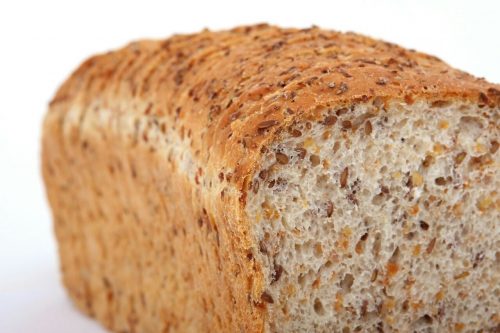
We should not skip any meals.If we have had a meal that contains very little or no fat or oil, we should not go more than three or three and a half hours without eating again. If the food we have made contains oils or fats, we should not go more than four or five hours without eating again. If we leave more time between meals, our body interprets it as a restriction and in the next meal will tend to store energy in the form of fat (regardless of the GI of food)
Being satisfied by each meal . If we are not satisfied at each meal, the amount of nutrients and energy will be reduced, our body will notice that it is being mistreated and in the next meal will put the mechanisms in place to store energy (Accumulate fat) in anticipation of future restrictions.

The resulting glycemic. That is, the average glycemic index of all that we have ingested in that meal. If we have taken care of the glycemic index regardless of each food , we will have guaranteed that the resulting glycemic is equal to or less than 45.
But what happens if we introduce a medium or high GI in that food? What happens if we drop a little mud in a bucket of clear water? Nothing. What if we put in a good handful? It gets muddy. The same thing happens with our digestion. We may have finished an excellent meal and feel like eating a GI food above 50. It will not happen if we eat a little of it. The amount of this "little" we can calibrate ourselves over time.
In short, we have reached the end of this approach to the beautiful and beneficial world of foods with low glycemic index. I hope that this exciting journey through the sugars and their speed of entry in blood has been useful.
As always, you can find me on Twitter every day with news of music and more information about nutrition and sport that I think can be useful.
In my last article we talked about vitamin C. The reflections and recommendations that I bring you in this article are the fruit of my knowledge and years of experience in choosing foods according to their glucemic index. Making this choice brings innumerable benefits to our health and we owe these to the continuous advances by the scientific community in research regarding nutrition. I will show you the synthesis of what I consider most relevant in language that is accessible to everyone.

Looking back and seeing how our ancestors fed themselves we see that their food came from harvesting, hunting and fishing. Later from agriculture and livestock . These were natural foods and hardly processed. From these they obtained the proteins, carbohydrates, fats, vitamins and minerals, antioxidants and trace elements necessary for life.
However, the arrival of technology and industry, which have brought us so many benefits and advances, has also modified to a certain degree how carbohydrates are absorbed in certain foods, a macronutrient very sensitive to our organism. Carbohydrates are also called simple carbohydrates or complex carbohydrates (three names for the same molecule we commonly call "sugar." From now on we will talk about "carbohydrates" or even simpler, "sugar") .

Throughout the years and due to successive changes to which certain foods have been subjected, this molecule, the carbohydrate following digestion, began to enter our blood faster and faster. We did not notice anything, but our body had to adapt to contain this great amount of energy that began to flood our bloodstream with more and more momentum. Today our bodies are still trying to adapt to this change, but with no success so far. Can we play our part to redress this situation? We will see that the answer is yes.
Back in the 1980s, the effects of "sugars" on people's health began to be studied. A new concept emerged, the "glycemic index" (GI). This is a measure that has served to classify foods according to how they raise blood glucose after being ingested. Therefore it is critical that we understand what the glycemic index of a food is. To do so, we need to to familiarize ourselves with the word "glycemia".
What is glycemia?
When we consume a food rich in carbohydrate, after its digestion and absorption, its nutrients pass into the bloodstream in the simplest way for them to be carried: glucose. The glucose molecules are, therefore, loose links after being separated from a long initial chain that was the original carbohydrate that the food contained. Well, glycemia is the concentration of this blood glucose at a given time. Thus, in simple terms we say that "we have a high blood glucose" if the concentration of glucose in our blood is high, and vice versa if it is low.

And what mechanisms are in place when our blood sugar increases?
As the blood glucose concentration increases (as our blood sugar levels rise), our pancreas responds by sending "traffic agents" (molecules of a hormone called "insulin") to, among other things, remove excess glucose from the bloodstream by directing it to the cells that can store it or simply need it as fuel.
Therefore, our pancreas, knowing that an excessive and rapid concentration of glucose in the blood may be harmful to our health, reacts by sending us waves of the hormone insulin to remove that excess energy. But be careful!!! Because if this action is too overwhelming, we will be temporarily "out of gas" .

The more glucose circulates through our bloodstream, the more the pancreas works by secreting insulin
The million dollar question, and how do we know if a food generates too rapid an input of its "sugar" in our blood? How do we know if a food produces an excessive peak of blood glucose?
Through the glycemic index (GI) .Knowing the glycemic indexes of the food we will now discover. If you have reached this far it is worth understanding this concept as it will help you understand the rest of the article .
What researchers did in their day was very simple: they gave a group of people "glucose as food" to ingest and then observed to what extent it made blood glucose levels rise in their blood. They took this reference data as a mirror and arbitrarily assigned it the value of 100, ie, Glycemic Index 100 (GI 100). Then they prepared to do the same with the rest of the food in our shopping basket and compared the behavior of each of them with that of "glucose as food".
It was then that they discovered, for example, that there were foods whose carbohydrates were absorbed at half the speed of "glucose as food." Therefore, these foods produced a peak, a rise in blood glucose half that of the reference. This is the case of foods with Glycemic Index 50 (GI 50). This is the case, for example, of the sugar-free cookie.

They also observed others that penetrated blood even more slowly than the mirror; as in the case, for example of fructose (fruit sugar) that has a GI of 20.
On the contrary, they also found that there were foods that behaved almost the same as "glucose as food"; as in the case of the oven potato with a GI of 95.

In conclusion, with these three examples we already have an idea of what GI means. If a food has a GI 100 (glycemic index of 100), we would say: its "sugars" enter the blood with the same speed, generating the same peak as that generated by "glucose as food". If a food has a GI 50 we would say: the "sugars" of this food enter the blood at half the speed of "glucose as food”.
Why is it worth knowing all this?
Although we will see later on the reason for the following statement, we are already in a position to understand what it means: "Ingestion of foods with average or high glycemic indexes, that is, equal to or greater than 50 makes us store energy in the form of fat, will make us fat!
So what does a diet with low glycemic indexes mean?
It is a way of eating where we identify foods that have a glycemic index equal to or less than 45 , and we choose only these in our daily shopping basket.

¿How do low glycemic index foods work?
By releasing blood glucose gradually. In doing so, the pancreas normalizes its functioning, works properly and secretes moderate, low amounts of insulin in the blood, which is key !
How do medium and high glycemic index foods work?
They release blood glucose quickly. In doing so, the pancreas has no choice but to urgently secrete large amounts of insulin in order to take most out of the glucose of the bloodstream. And this way of behaving carries with it two harmful effects: on the one hand, the pancreas works at a faster pace, and on the other hand after its intervention (we do not know what is worse) leaves the energy levels at a minimum!!! It leaves us shivering !!!

Why is it important for us to minimize insulin secretion?
Firstly, as we are allowing our pancreas, that organ that produces the hormone insulin, to not have to work at a breakneck pace all the time.
Secondly, we are going to achieve that the mechanisms of fat storage are paralyzed. Remember that insulin, in its determination to draw excess energy (glucose) from the blood, also sets in motion fat storage mechanisms (something no one wishes). Therefore, we will deactivate it.
Thirdly, if the food we eat only slightly increases the insulin in the blood, the nutrients will circulate through the blood stream irrigating our whole body normally , and the excess energy will simply be discarded by our body.
And finally, if we also feed ourselves without submitting to caloric restrictions and do not skip any meal (as we will see at the end of the post), our body warns us to supply everything it needs and begins to slowly get rid of the reserve fats we had accumulated !!!

what benefits do we get from consuming low glycemic index foods?
It enhances our concentration. The food for the brain is glucose. When we feed ourselves this way our neurons have fuel uninterruptedly. However, the average and high glycemic indexes cause ups and downs in blood energy that negatively affect our concentration. .
We get more stamina and performance in our daily activities.A slow and sustained supply of energy to our muscles and brain is ideal for maximizing our endurance and performance in daily activities. However, the consumption of foods of medium and high glycemic index leads to frequent fainting due to the periodic drops in blood glucose.
We maintain a stable mood. Keeping our energy levels stable keeps our mood stable. However, the consumption of foods of medium and high glycemic index gives rise to the typical irritability that accompanies the ups and downs of blood glucose.
They keep us cool and alert. Stable energy levels keep us cool. However, medium and high GI foods cause sleepiness after meals.

We feel satisfied for much longer. We feel more complete. By keeping energy stable through our blood, the body works normally as it gets the energy it needs. So this keeps us from eating. However, after consuming foods with medium and high glycemic indexes, it is normal to find ourselves hungry sooner than anticipated; we feel the sudden need to eat every so often.
Reduces our excess weight.The body, which is very wise, realises that we are treating it very well, as it has all the energy it needs. Therefore, we do not force it to begin energy storage processes in the form of fat for fear of future shortage. If we are also full at each meal (without quantity restrictions) and we skip meals, then what does our body do? Very simple, it begins to use the excess energy that we have in our fatty deposits (our spare tyres) and gets rid of them progressively.

Prevents and normalizes type 2 diabetes.From the moment we stop subjecting the pancreas to forced labor, it normalizes its functioning until it works properly.
It lowers cholesterol and triglycerides.There is evidence that choosing foods with low GI, lowers LDL (bad cholesterol), increases HDL (good cholesterol) and lowers our blood triglycerides (fat)
Improves our cardiovascular system. Eliminating excess weight that leads to low GI food choices results in our heart working with less effort, being less exhausted.
Prevents macular degeneration.Evidence also shows that the consumption of low GI foods could prevent such degeneration.
What are low glycemic index foods?
There are countless lists of glycemic indexes on the internet. It is fast and easy to access them. Just enter: "glycemic index of food" and you will find different lists to consult .

And once we have taken a look at the lists, what can we do?
Very easy. In general, after identifying which foods we usually consume with glycemic indexes equal to or greater than 50, substitute these for their lower-GI first cousin.
Here is an example of what I usually do:I substitute normal bread for whole- meal bread, normal chocolate for 70% chocolate, jam for fructose jam (fruit sugar), caramelized nuts for natural dried fruits, roasted or fried, honey for agave syrup, side dishes of potatoes for vegetables of any kind, dates for dried figs, table sugar for fructose, macaroni for spaghetti, Beer for wine or soft drinks.
Do all foods have a first cousin?
All foods can be substituted for suitable glycemic index counterparts, if they do not have a first cousin; they surely have a second cousin. Just look for them and give us some time to get used to their consumption.

What factors influence the glycemic index of foods ?
In order to finish up, let us consider some important extreme.
Cooking.The more food is cooked, the more its glycemic index is raised. So we must ensure it is cooked at a recommended time, no more. Do not overcook food.
Fibre.The more fibre a food contains, the more slowly its nutrients (including carbohydrates) are absorbed and thus the more its glycemic index is reduced. Hence, whole foods have a lower glycemic index than their refined counterparts: the refined have little fibre, while the whole foods conserve it .
What precautions must be taken?
Make sure the bread is 100% wholemeal.That is, it is made from 100% whole wheat flour. We must make sure. Just a little mixing with refined flours will defeat our target as the GI will exceed 50.

We should not skip any meals.If we have had a meal that contains very little or no fat or oil, we should not go more than three or three and a half hours without eating again. If the food we have made contains oils or fats, we should not go more than four or five hours without eating again. If we leave more time between meals, our body interprets it as a restriction and in the next meal will tend to store energy in the form of fat (regardless of the GI of food)
Being satisfied by each meal . If we are not satisfied at each meal, the amount of nutrients and energy will be reduced, our body will notice that it is being mistreated and in the next meal will put the mechanisms in place to store energy (Accumulate fat) in anticipation of future restrictions.

What is the icing on the cake?
The resulting glycemic. That is, the average glycemic index of all that we have ingested in that meal. If we have taken care of the glycemic index regardless of each food , we will have guaranteed that the resulting glycemic is equal to or less than 45.
But what happens if we introduce a medium or high GI in that food? What happens if we drop a little mud in a bucket of clear water? Nothing. What if we put in a good handful? It gets muddy. The same thing happens with our digestion. We may have finished an excellent meal and feel like eating a GI food above 50. It will not happen if we eat a little of it. The amount of this "little" we can calibrate ourselves over time.
In short, we have reached the end of this approach to the beautiful and beneficial world of foods with low glycemic index. I hope that this exciting journey through the sugars and their speed of entry in blood has been useful.
As always, you can find me on Twitter every day with news of music and more information about nutrition and sport that I think can be useful.

How to improve our creativity through nutrition and sport.
My experience in an eBook
Follow @adholife
Comments are closed.


